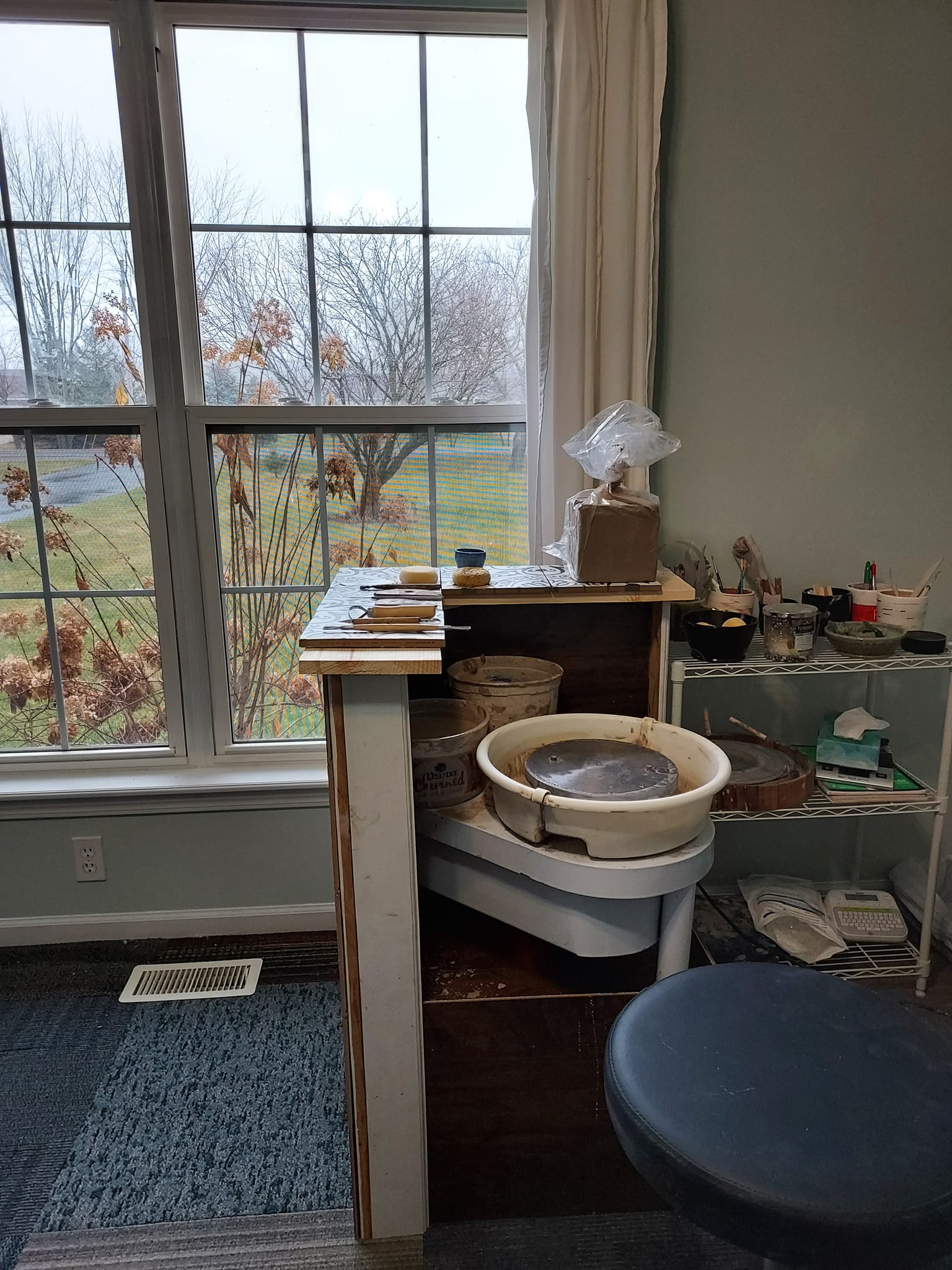About the Artist
Justin Shankster is a life-long artist. He received his bachelors in Art Education degree from the University of Michigan,
Flint and a masters in educational technology at The University of Michigan, Flint. Justin is active in many forms of visual arts
and design such as acrylic painting, photography, wheel-thrown pottery, ceramic hand-built sculpture, arts and crafts, vinyl shirt designs,
screenprinting, and website development.
Justin also enjoys keeping active during the Michigan summers with gardening, creative landscaping projects.
Justin Shankster is currently a high school visual arts teacher and head mentor of the
Railroader Robotics FIRST Robotics Competition Team 5282 at the Durand Area High School in Durand, MI.
He has deticated his careeer toward educating the youth of Durand, MI in the areas of visual arts and
technology knowledge and career preparation.

Hand-Made Ceramics
Pottery is hand-made by Swartz Creek, Michigan artists, Justin Shankster and Rebecca Shankster. All clay is purchased locally in Clio, Michigan at Runyan Pottery Supply. All glazes used in our studio are profesionally made by Amaco and Duncan, leading brand-name glaze manufacturers.
Ceramic Care
When purchasing a hand-made ceramic artwork it is important to know how to care for your piece. Ceramic is a permanent material when cared for properly. There are two basic categories of ceramic pieces that we sell, low-fired and medium-fired clay. This involves the type of raw clay used and what temperature that clay is fired at. Here are a few basc care tips for your new pottery/ceramic piece(s).

Low-Fired Ceramic Care
- Marked on bottom of pottery with LF
- Hand wash only
- Food safe - yes
- Oven safe - yes
- Microwave safe - yes
Mid-Fired Ceramic Care
- Marked on bottom of pottery with MF
- Dishwasher safe
- Food safe - yes
- Oven safe - yes
- Microwave safe - yes
Contact Us
American Shankster Pottery and Crafts
Phone: (810) 347-3125
Email: justinshankster@gmail.com
Process From Raw Clay to Ceramic
The entire process of making pottery takes about two weeks at the fastest. Here are some of the steps your pottery has gone through during the process of construction.
Wet Clay - When throwing clay on the potters wheel is hold approximately 1/12th the volume of water to clay ratio. The clay must be quite soft to change its shape while spinning on the wheel. The clay also has to be soft to attach any extra features such as handles.
Leather Hard Clay - After sitting on a shelf for 1-2 days, the clay hardens up yet remains a darker color. For certain types of clay, this provides the perfect consistency to carve into the clay.
Dry Clay - Before firing the clay in a kiln (ceramic oven) the clay must be completely dry. This takes 7-10 days of sitting on a shelf to completely dry out. During this time the water in the clay evaporates and the clay shrinks, losing about 1/12th of its physical mass. It is better for the clay to dry slowly so that it does not crack.
Bisque Firing - Once the clay is completely dried out, the clay is loaded into a ceramic kiln and heated up gradually to a cone 04 (about 1971℉). After bisque firing the clay is chemically turned in to ceramic material which makes it permanent. These bisque-fired ceramics are often referred to as bisque-ware. The bisque-ware can be glazed with a variety of colors. Both low-fire and high-fire clay is bisque fired at a cone 04 tempurature.
Glaze Firing - Glazes are made for the type of clay used. I used low-fire glazes with only low-fire ceramics and high-fire glazes with only high-fire ceramics. Bisque-ware is glazed with several hand painted coats then is fired in a kiln for a second time to melt the glaze into a final decorative glass coating. Low-fire ceramics during glaze firing are generally baked at a cone 05 (about 1911℉) while high-fire ceramics during glaze firing are generally baked at a cone 5 (about 2205℉).









